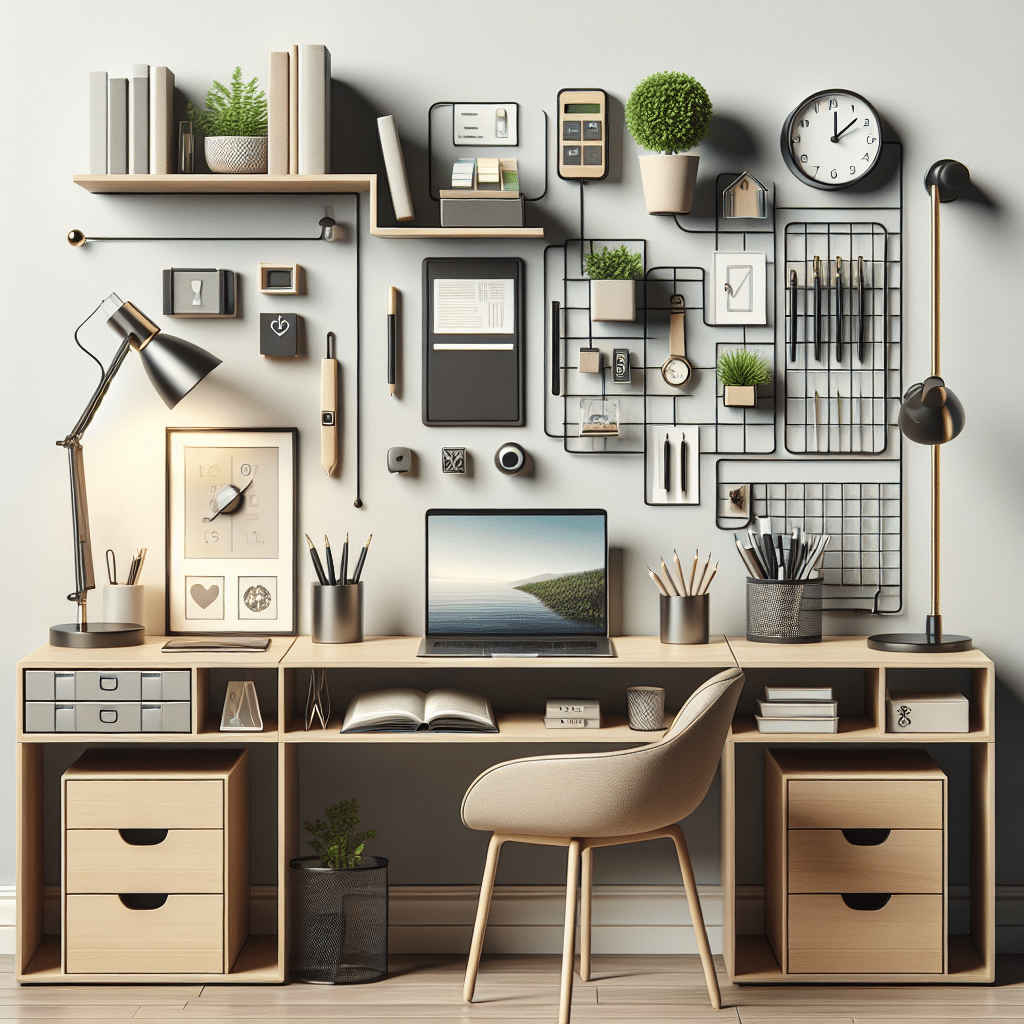Understanding the Importance of Desk Arrangement
A well-arranged desk can significantly enhance productivity and efficiency in small office spaces. The arrangement of desk accessories not only reflects personal style but also promotes organization and minimizes distractions.
Assess Your Space
When considering how to arrange desk accessories, evaluate the dimensions of your desk and the overall office space. Measure the height, width, and depth of your desk to determine which desk accessories will fit optimally. An efficient arrangement should maximize your workspace while allowing easy access to essential items.
Declutter Before Organizing
Start by decluttering your desk. Remove items that do not belong or are infrequently used. This can include old paperwork, broken items, or decorative objects that don’t serve a purpose. A streamlined workspace fosters clarity and enables you to focus better on your tasks.
Categorize Your Accessories
Group your accessories into categories such as writing tools, technology, paperwork, and personal items. Reflect on the frequency of use for each category. For example, writing tools (pens, pencils, markers) should be easily accessible, while less frequently used items can be stored away.
Optimal Placement of Essential Items
Desk Organizer
Invest in a desk organizer that can hold your writing instruments, sticky notes, and other daily necessities. Position it within arm’s reach to enhance efficiency. Choose one that also complements your desk’s aesthetic; options range from modern metal to classic wood.
Monitor Positioning
If you use a computer, consider your monitor’s placement. Ideally, it should be at eye level to reduce neck strain. Utilize monitor risers to create additional storage underneath for notebooks or files. This not only keeps your desk tidy but also promotes ergonomic posture.
Keyboard and Mouse Arrangement
Position your keyboard directly in front of your monitor and at a comfortable height to minimize wrist strain. Your mouse should be within the same plane as the keyboard for a smooth workflow. Use a mouse pad with wrist support to enhance comfort.
Utilize Vertical Space
In small office spaces, maximizing vertical space is crucial. Consider wall-mounted shelves or pegboards to store office supplies. This not only keeps your desk clutter-free but also allows you to take advantage of additional storage.
Smart Drawer Management
With limited desk space, make full use of drawers. Organize your drawers with dividers to keep items like paper clips, notepads, and chargers compartmentalized. Labeling each section will save you time when you need to find specific items.
Incorporating Technology
Charging Stations
For wired and wireless devices, designate a charging station on your desk. Use a cable organizer to keep cords tidy and prevent tangling. Mount the charging station near a power outlet, ensuring your devices are conveniently accessible and charged.
Printer and Other Devices
If a printer is part of your workspace, consider its placement carefully. Ideally, it should be placed to the side or behind your work area to maintain a clear desktop surface. Use a small cart or shelf for easy access while keeping the desktop uncluttered.
Personal Touch with Organizational Style
While functionality is key, personalizing your workspace with accessories can make it more enjoyable. Consider a small plant for aesthetics and improved air quality. Use attractive storage boxes for crucial documents or personal items, blending functionality with style.
Optimal Lighting
Natural light greatly enhances productivity. Position your desk near a window if possible. Add a task lamp for additional illumination during late hours or gloomy days. Ensure the lamp does not cast shadows on your work area by placing it correctly.
Preventing Distractions
To minimize distractions, keep only functional items on your desk. Avoid overcrowding your workspace with too many personal items. If you enjoy family photos, limit to one or two in small frames placed strategically, ensuring they bring joy without causing visual clutter.
Ergonomic Considerations
Arrange desk accessories with ergonomics in mind. Ensure items you frequently use are at a height and position that prevents strain. The top of your monitor should be at eye level, and frequently used items should be within a 12 inches reach to promote a more comfortable working environment.
Regular Maintenance
Set aside time each week to maintain your organized desk. This can involve reevaluating accessory placement, discarding unnecessary items, and refreshing your workspace. Regular tidy-ups ensure that your small office space remains organized and conducive to productivity.
Color Coordination
Utilize a color scheme that aligns with your brand or personal aesthetic. Opt for matching desk accessories to create a harmonious look. For example, if you utilize a blue theme, find organizers, pen holders, and sticky notes in similar shades.
Utilizing Technology for Planning
Digital tools can assist in planning and organizing your workspace. Use apps like Trello or Todoist to track your tasks and deadlines. Keeping a digital planner can help you declutter your desk by reducing the need for paper.
Customization Over Convention
Do not feel limited by conventional arrangements. Think creatively about how you use your desk. Perhaps a file cabinet can double as a printer stand. Customize your workspace according to your specific needs, preferences, and workflow habits.
Keeping a Flexible Layout
As your work style evolves, so should your desk arrangement. Don’t hesitate to shift accessories around, experiment with new layouts, and adapt your workspace according to changing project requirements or personal habits.
The Role of Sound in Workspace Efficiency
Pay attention to the sound environment in your workspace to prevent distractions. Consider soundproofing materials or noise-canceling headphones if your office has the potential for disturbances. An organized desk will help keep your auditory landscape consistent and conducive to productivity.
Conclusion
Effective desk accessory arrangement in small office spaces is an art that balances functionality and aesthetics. Prioritize access to needed items while creating a comfortable, personalized environment that promotes productivity, efficiency, and enjoyment in your workday.
